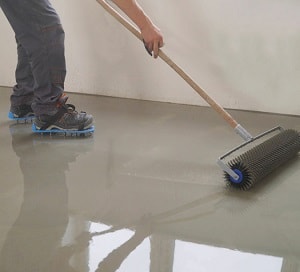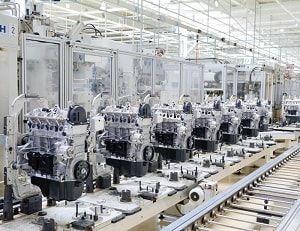 What do you usually notice about your boiler after layup? Does everything run smoothly? Or are there corrosion indicators? Being aware of the telltale signs of corrosion and their preventative solutions is an important step toward better preservation and extended service life. The following lessons offer valuable insights for dry and wet boiler layup success.
What do you usually notice about your boiler after layup? Does everything run smoothly? Or are there corrosion indicators? Being aware of the telltale signs of corrosion and their preventative solutions is an important step toward better preservation and extended service life. The following lessons offer valuable insights for dry and wet boiler layup success.
Lessons Learned After Dry Layup
Dry layup means shutting down and draining the boiler. With inadequate preservation, telltale signs of corrosion may show up 4-6 months later when the boiler is filled up and restarted. This is often seen in high iron levels of 0.5, 1.0, or 1.5 ppm in the boiler water. Such high levels are bad news for boilers, not only because they represent metal loss somewhere in the system, but also because iron can bind antiscalants, dispersants, polymers, and corrosion inhibitors from working properly. The high iron levels could come from anywhere in the boiler, steam, or condensate system where corrosion occurred during layup or oxygen pitting was triggered in the critical startup phase. Since metal loss cannot be recovered once it has happened, prevention is the best strategy. Dry layup with the Boiler Gecko™, Boiler Lizard®, or Boiler Dragon™ (depending on boiler size) introduces Vapor phase Corrosion Inhibitors into the boiler enclosure, where they form a protective molecular layer on all metal surfaces. For more comprehensive protection, the Boiler Gecko™ and/or Boiler Dragon™ can also be fogged into condensate tanks or other parts of the steam system. Finally, the Boiler Egg™ can be added to protect the entire steam and boiler system against oxygen pitting during the critical startup phase.
Lessons Learned After Wet Layup
Wet layup is usually done to allow faster startup. Oxygen pitting above the water level is therefore less likely to be noticed until the annual inspection rolls around sometime later. If oxygen pitting has increased since the previous inspection, and extended wet layup occurred in between the two inspections, chances are that pitting arose from inadequate wet layup. This is not uncommon, as traditional sulfite chemistries used to scavenge oxygen do not work in the headspace above the water. Furthermore, since maintenance and monitoring of sulfites during wet layup is challenging, corrosion can also happen below the water level during wet layup, revealing itself by high iron levels in the water at startup.
In either case, Boiler Iguana™ is a simple and easy solution. It can be added to the feedwater and/or condensate system and pumped to the boiler. Due to its combination of contact and Vapor phase Corrosion Inhibitors, Boiler Iguana™ protects the walls of the boiler in direct contact with the treated water as well as in the headspace above the water. Frequent monitoring is not required, and the product is effective up to 302 °F (150 °C), which means the boiler can be kept on low fire for even faster return to service if desired.
Putting Lessons Learned into Practice
Finding high iron levels or visible corrosion damage inside boilers after startup can be a big blow. But it can also be a lesson learned, leading the boiler operator or water treatment service provider to better protection and less likelihood of premature failure in the future. Contact Cortec® to get started applying these lessons for better boiler layup: https://www.cortecwatertreatment.com/contact-us/
Keywords: boiler layup tips, dry boiler layup lessons, wet boiler layup lessons, boiler preservation, oxygen pitting during startup, sulfite challenges, corrosion inhibitors, Cortec, Boiler Lizard, high iron levels in boiler water
For a PDF version please click here.










